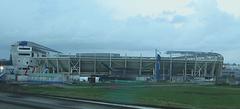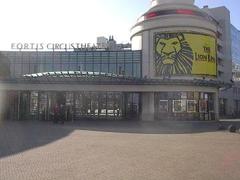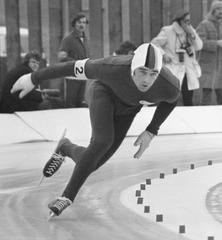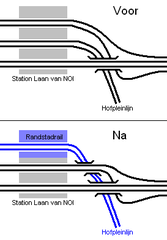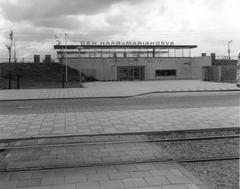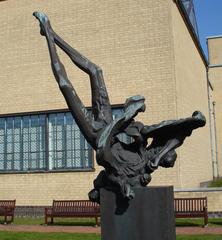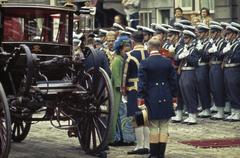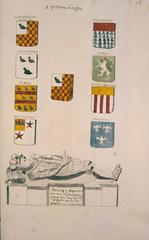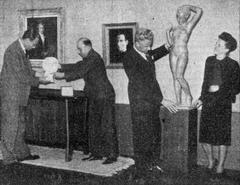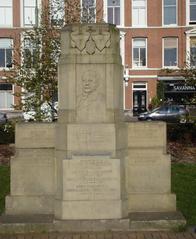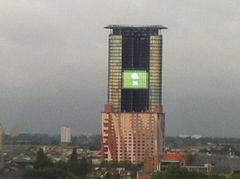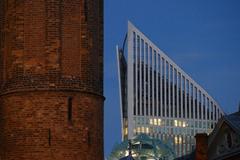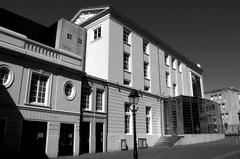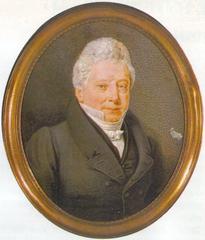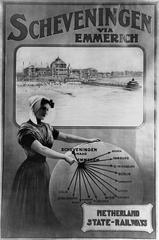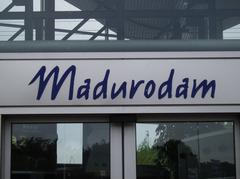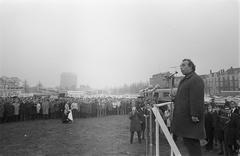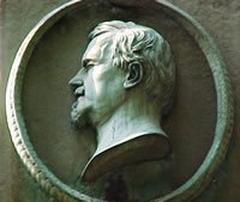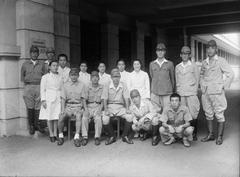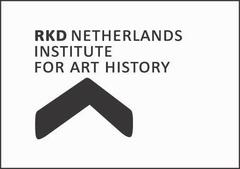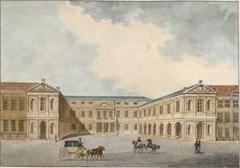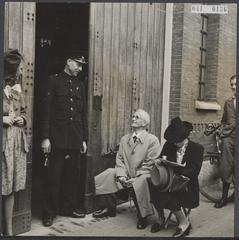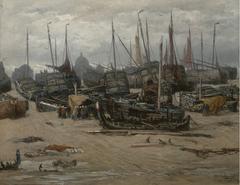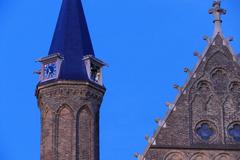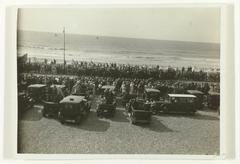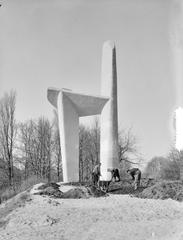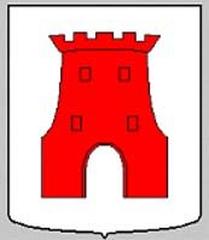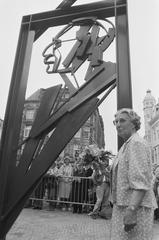
Afvoerkanaal Visiting Hours, Tickets, and Comprehensive Guide to Historical Sites in The Hague
Date: 04/07/2025
Introduction
Nestled in the heart of The Hague, Netherlands, the Afvoerkanaal stands as a testament to Dutch mastery in water management, urban planning, and environmental stewardship. Unlike the commercial canals of Amsterdam or Delft, the Afvoerkanaal was constructed in the late 19th and early 20th centuries as a functional discharge canal, serving to regulate water levels, prevent flooding, and improve sanitation during a period of rapid industrial growth (MVRDV – The Hague Canals Project). Today, it is not only a vital part of the city’s hydraulic system but also an ecological corridor and cherished recreational space.
This guide provides essential information for visitors—including hours, accessibility, activities, travel tips, and nearby attractions—ensuring a rewarding and informative experience. Whether you’re a history enthusiast, nature lover, or casual traveler, the Afvoerkanaal offers a unique perspective on The Hague’s layered identity and green urban character (LivingNomads; UseFew).
Table of Contents
- Introduction and Overview
- Historical Background and Significance
- Ecological and Cultural Importance
- Visiting Information (Hours, Tickets, Accessibility, Tours)
- Activities Along the Afvoerkanaal
- Points of Interest and Nearby Attractions
- Visitor Tips and Safety
- Preservation and Future Prospects
- Frequently Asked Questions (FAQ)
- Visuals and Media
- Conclusion
- Sources
Historical Background and Significance
The Afvoerkanaal emerged during The Hague’s rapid industrialization as a crucial piece of infrastructure. While cities like Amsterdam built canals primarily for trade, The Hague’s Afvoerkanaal and related waterways were designed to protect against flooding and improve urban sanitation (MVRDV – The Hague Canals Project). Its survival, when many historic canals were filled in for urban expansion, highlights its ongoing importance to the city’s resilience and sustainability.
Throughout the 20th century, the Afvoerkanaal remained integral to The Hague’s water management system. It continues to serve as a living reminder of the city’s adaptation to environmental challenges and commitment to sustainable urban growth (Britannica).
Ecological and Cultural Importance
Today, the Afvoerkanaal is a vibrant ecological corridor, supporting a variety of flora and fauna and enhancing The Hague’s reputation as the greenest city in the Netherlands (LivingNomads). It is also a valued cultural asset, offering walking and cycling paths, recreational boating, and hosting community events. Local initiatives and revitalization projects have transformed the canal into a symbol of The Hague’s layered history, environmental consciousness, and urban vitality (UseFew).
Visiting Information
Visiting Hours
- Open Access: The Afvoerkanaal is a public space accessible 24 hours a day, year-round.
- Recommended Visits: Daylight hours (8:00 AM to sunset) are ideal for safety and enjoyment.
Tickets and Entry
- Fees: No tickets or entrance fees; the canal and adjacent paths are freely accessible.
- Activities: Some special events, boat tours, or equipment rentals may require booking and a fee.
Accessibility
- Paths: Flat, paved, and wheelchair/stroller-friendly.
- Facilities: Restrooms and refreshment kiosks are available near major access points.
- Signage: Information boards in Dutch and English.
Guided Tours
- Availability: Occasional guided walking and cycling tours include the Afvoerkanaal; book via local tourism offices or online platforms.
- Resources: Check the official The Hague tourism website for up-to-date tour schedules.
Getting There
- Public Transport: Easily reached by tram and bus (major stops: Hollands Spoor, Den Haag Centraal).
- Cycling: Extensive cycling network; bike rentals near transit hubs.
- Car: Paid parking is limited; Park & Ride facilities are available.
Activities Along the Afvoerkanaal
Canal Boating and Water Sports
- Tours: Local operators offer boat and kayak tours during peak season (May–September).
- Recreation: Kayaking, paddleboarding, and occasional community boating events.
Cycling and Walking Trails
- Trails: Well-maintained paths connect to parks like Zuiderpark and Clingendael Park.
- Sightseeing: Self-guided tours with interpretive signage.
Urban Nature and Birdwatching
- Wildlife: Herons, kingfishers, and waterfowl are common. Birdwatching events occur seasonally.
Fishing
- Permit: Allowed in designated areas with a valid fishing license (vispas).
- Species: Perch, roach, carp.
Points of Interest and Nearby Attractions
Historic Bridges and Landmarks
- Features: Several architecturally notable bridges and remnants of sluices/pumping stations highlight Dutch hydraulic engineering (Britannica).
Art Installations and Community Spaces
- Public Art: Canalside murals and sculptures celebrate water, nature, and community.
- Events: Summer months feature pop-up festivals and performances.
Major Attractions Nearby
- Cultural Sites: Binnenhof, Mauritshuis Museum, Peace Palace.
- Parks: Zuiderpark, Westbroekpark.
- Other: Proximity to the seaside at Scheveningen (World Travel Guide).
Visitor Tips and Safety
- Best Season: Late spring to early autumn (May–September) for mild weather and lush scenery (Kimkim).
- What to Bring: Weather-appropriate clothing, comfortable shoes, reusable water bottle, and camera.
- Etiquette: Stay on paths, respect wildlife, use bins for litter, avoid swimming.
- Safety: Area is generally safe; take care at night and secure valuables.
- Accessibility: Most paths are accessible; public transport and rental bikes cater to visitors with various needs.
Preservation and Future Prospects
The Afvoerkanaal is benefiting from ongoing urban renewal projects aimed at enhancing water quality, restoring filled-in canals, and boosting ecological function (MVRDV – The Hague Canals Project). As climate change increases flood risks, the canal’s role remains essential in sustainable water management and urban resilience.
Frequently Asked Questions (FAQ)
Q: Are there entrance fees or tickets required?
A: No, access is free. Some special activities may charge.
Q: Can I swim or boat in the Afvoerkanaal?
A: Swimming is discouraged due to water quality. Boating is allowed during special events and with rentals.
Q: Is the area wheelchair accessible?
A: Yes, paths are flat and paved.
Q: Are guided tours available?
A: Yes, occasionally; check with local tourism offices.
Q: What wildlife might I see?
A: Expect to see herons, waterfowl, and a variety of native plants.
Visuals and Media
Conclusion
The Afvoerkanaal in The Hague is a true blend of historic engineering, ecological richness, and urban recreation. With free year-round access, excellent connectivity, and a host of activities, it’s an ideal destination for anyone seeking to experience the best of The Hague’s culture and green spaces. Download the Audiala app for interactive maps, guided tours, and real-time updates, and share your visit using #AfvoerkanaalVisit.
Sources
- MVRDV – The Hague Canals Project
- UseFew – Top 10 Historical Sites for Tourists in the Netherlands
- LivingNomads – The Hague Blog
- Britannica – The Hague
- The Tourist Checklist – Things to Do in The Hague
- World Travel Guide – The Hague
- Kimkim – The Netherlands in July

